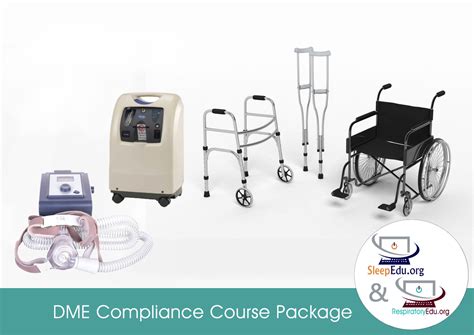The ProTime INR test, also known as the Prothrombin Time International Normalized Ratio test, is a crucial diagnostic tool used to measure the time it takes for blood to clot and to evaluate the effectiveness of warfarin therapy. Warfarin is a commonly prescribed anticoagulant medication used to prevent blood clots from forming or growing. The ProTime INR test plays a vital role in ensuring that patients on warfarin therapy have an appropriate balance between preventing blood clots and minimizing the risk of bleeding.
What is the ProTime INR Test?
The ProTime INR test is a modification of the Prothrombin Time (PT) test, which measures how long it takes for blood to clot. The PT test is used to evaluate the extrinsic and common coagulation pathways. The results of the PT test are expressed in seconds, but to standardize the results and ensure that they are comparable across different laboratories, the International Normalized Ratio (INR) was developed.
How Does the ProTime INR Test Work?
The ProTime INR test involves taking a blood sample from a patient, typically from a vein in the arm, and adding tissue factor to it. The tissue factor triggers the extrinsic coagulation pathway, and the time it takes for the blood to clot is measured. This clotting time is then compared to a normal reference sample, and the result is calculated as an INR value.
The INR value is essentially a ratio that reflects how much longer it takes for the patient’s blood to clot compared to a normal sample. An INR value of 1.0 is considered normal, indicating that the blood takes the same amount of time to clot as the reference sample. Values above 1.0 indicate that the blood takes longer to clot, suggesting that the patient may be at a higher risk of bleeding, while values below 1.0 suggest that the blood clots more quickly, indicating a potential increased risk of thrombosis.
Importance of the ProTime INR Test
The ProTime INR test is essential for managing patients on warfarin therapy because it helps healthcare providers determine the appropriate dose of warfarin to prescribe. Warfarin works by inhibiting the production of vitamin K-dependent clotting factors in the liver, thereby prolonging the time it takes for blood to clot. However, the effect of warfarin can vary significantly from person to person, and even in the same person over time, due to factors such as diet, other medications, and liver function.
By regularly monitoring the INR, healthcare providers can adjust the dose of warfarin to maintain the patient’s INR within a target range, typically between 2.0 and 3.0 for most indications. This target range balances the risk of thrombosis (if the INR is too low) against the risk of bleeding (if the INR is too high).
Factors That Can Affect ProTime INR Results
Several factors can influence the results of the ProTime INR test, including: - Diet: Foods high in vitamin K, such as leafy green vegetables, can decrease the effectiveness of warfarin and lower the INR. - Other medications: Many medications can interact with warfarin, either increasing or decreasing its effect. - Liver function: Changes in liver function can affect the metabolism of warfarin and the production of clotting factors. - Vitamin K supplements: Taking vitamin K supplements can counteract the effects of warfarin. - Illness: Certain illnesses, especially those involving the liver or affecting nutritional status, can impact INR levels.
Managing ProTime INR Results
Effective management of ProTime INR results involves regular monitoring and dose adjustments of warfarin as necessary. Patients on warfarin therapy typically need to have their INR checked every few weeks, although the frequency can vary based on individual factors, such as stability of INR values and changes in health status.
In addition to regular monitoring, patient education plays a critical role in the successful management of warfarin therapy. Patients should be aware of the importance of keeping their warfarin doses consistent, avoiding significant changes in diet or medications without consulting their healthcare provider, and recognizing the signs of bleeding or thrombosis.
Future of ProTime INR Testing
With advancements in medical technology, there is a growing trend towards point-of-care (POC) testing for INR, which allows patients to monitor their INR levels at home using portable devices. These devices can provide immediate results, facilitating more timely adjustments to warfarin dosing and potentially improving the quality of life for patients on long-term anticoagulation therapy.
Moreover, the development of novel oral anticoagulants (NOACs) has offered alternative therapeutic options for patients requiring anticoagulation. NOACs, such as direct thrombin inhibitors and factor Xa inhibitors, have more predictable pharmacokinetics than warfarin and do not require regular monitoring of coagulation parameters, which could potentially reduce the need for frequent ProTime INR tests in the future.
Conclusion
The ProTime INR test remains a critical tool in the management of patients on warfarin therapy, allowing for the precise adjustment of anticoagulation levels to minimize the risk of both thrombotic and bleeding complications. As medical science continues to evolve, it is crucial to stay abreast of the latest developments in anticoagulation therapy and monitoring, ensuring that patients receive the most effective and safest care possible.
What does the ProTime INR test measure?
+The ProTime INR test measures the time it takes for blood to clot and evaluates the effectiveness of warfarin therapy, expressed as an International Normalized Ratio (INR) value.
Why is it important to regularly monitor INR levels in patients on warfarin therapy?
+Regular monitoring of INR levels is crucial to ensure that the patient’s blood is within the therapeutic range, balancing the risk of thrombosis against the risk of bleeding, and to make necessary adjustments to the warfarin dose.
What factors can influence ProTime INR results?
+Factors such as diet (especially vitamin K intake), other medications, liver function, and overall health status can influence ProTime INR results.
What is the target INR range for most patients on warfarin therapy?
+The target INR range for most indications is between 2.0 and 3.0, although this can vary depending on the specific condition being treated and individual patient factors.


